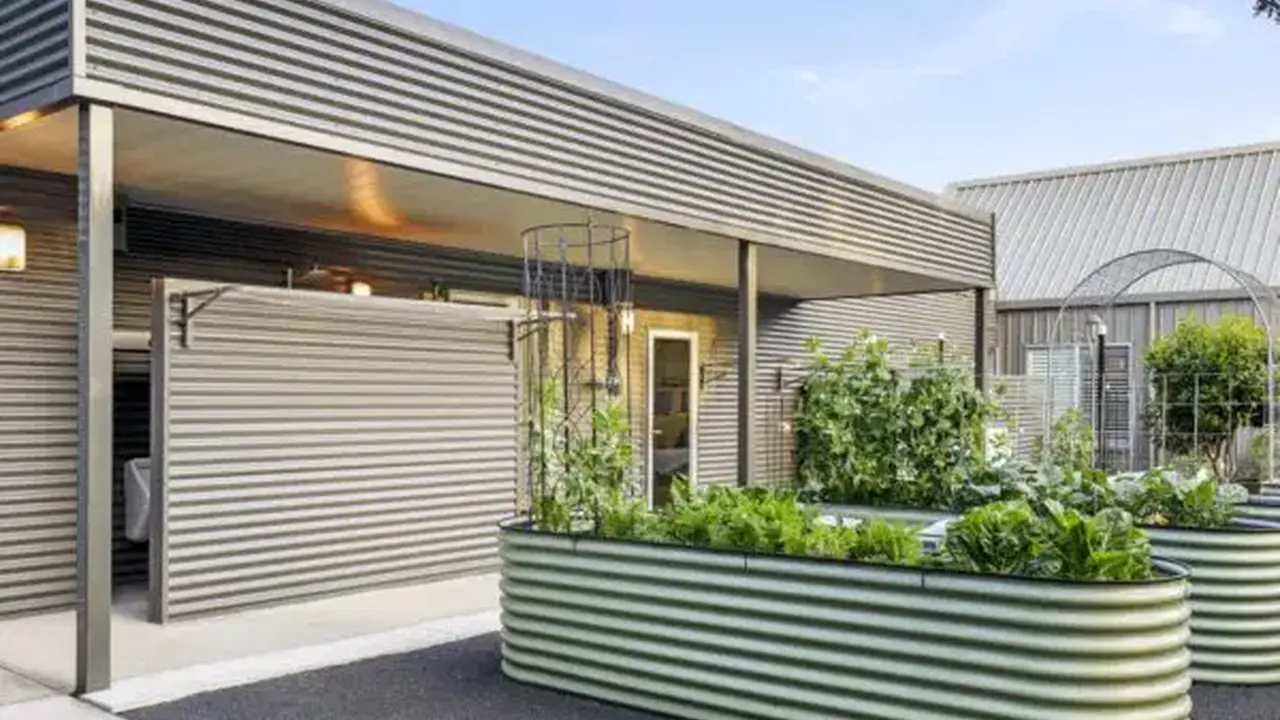The 7 Best Smart Home Devices for Environmental Control
Take control of your home environment with the 7 best smart home devices. Optimize temperature, humidity, and air quality.

The 7 Best Smart Home Devices for Environmental Control
Welcome to the future of home living, where technology seamlessly integrates to create an optimal living environment. We're talking about smart home devices that go beyond mere convenience, actively working to enhance your health by controlling key environmental factors like temperature, humidity, and air quality. Whether you're battling seasonal allergies, seeking better sleep, or simply aiming for a more comfortable and energy-efficient home, these devices are game-changers. Let's dive into the top 7 smart home devices that empower you to biohack your living space for peak performance and wellness.
Smart Thermostats for Optimal Temperature Regulation and Energy Efficiency
Controlling your home's temperature isn't just about comfort; it's about optimizing your body's natural rhythms and saving energy. Smart thermostats learn your preferences, adapt to your schedule, and can even be controlled remotely, ensuring your home is always at the perfect temperature, whether you're waking up, heading to bed, or returning from a long day. They are crucial for maintaining a consistent and healthy indoor climate, especially when considering seasonal changes that impact heating and cooling needs.
Why Smart Thermostats are Essential for Environmental Control
- Personalized Comfort: They learn your habits and adjust temperatures automatically.
- Energy Savings: Many offer features like geofencing (adjusting when you leave or arrive) and energy reports to help you save on utility bills.
- Remote Control: Adjust your home's temperature from anywhere using your smartphone.
- Integration: Seamlessly connect with other smart home devices for a unified system.
Top Smart Thermostat Recommendations and Comparisons
1. Google Nest Learning Thermostat (3rd Gen)
Key Features: Learns your schedule and preferences, auto-schedules, Farsight (shows time/temp when you approach), energy history, remote control, integrates with Google Assistant and Alexa. Use Case: Ideal for users who want a truly 'set it and forget it' experience. Its learning algorithm is incredibly effective at optimizing temperature without constant manual adjustments. Great for busy individuals or families. Pros: Excellent learning capabilities, sleek design, robust app, good energy saving features. Cons: Higher price point, some users find the learning curve initially steep. Price: Approximately $249 USD
2. ecobee SmartThermostat with Voice Control
Key Features: Comes with a remote sensor to detect temperature and occupancy in different rooms, built-in Alexa, integrates with Apple HomeKit, Google Assistant, and Alexa, detailed energy reports. Use Case: Perfect for homes with uneven heating/cooling or multiple occupants with varying temperature preferences. The remote sensor ensures comfort where it matters most. Pros: Room sensors are a huge advantage, voice control built-in, wide smart home compatibility, good energy insights. Cons: Slightly more complex setup than Nest, voice control can be finicky at times. Price: Approximately $239 USD
3. Honeywell Home T9 Smart Thermostat
Key Features: Includes a smart room sensor, works with Alexa and Google Assistant, geofencing, customizable scheduling, easy-to-use app. Use Case: A solid all-rounder for those seeking reliable performance and multi-room sensing without the premium price tag of some competitors. Good for families looking for balanced comfort. Pros: Reliable performance, good value, easy installation, effective room sensors. Cons: Design is less premium than Nest or ecobee, app can be less intuitive for advanced features. Price: Approximately $199 USD
Smart Air Purifiers for Superior Indoor Air Quality and Allergy Relief
The air inside your home can be up to five times more polluted than outdoor air. Smart air purifiers are vital for removing allergens, dust, pet dander, smoke, and volatile organic compounds (VOCs), significantly improving respiratory health and reducing allergy symptoms. For those in urban environments or areas with high pollen counts, these devices are non-negotiable for maintaining a healthy indoor environment.
Why Smart Air Purifiers are Essential for Environmental Control
- Allergen Reduction: Trap pollen, dust mites, pet dander, and mold spores.
- Odor Elimination: Remove cooking odors, pet smells, and smoke.
- VOC Filtration: Filter out harmful chemicals from cleaning products, paints, and furniture.
- Smart Monitoring: Many come with air quality sensors that automatically adjust fan speed based on detected pollutants.
Top Smart Air Purifier Recommendations and Comparisons
1. Coway Airmega 200M Smart Air Purifier
Key Features: 4-stage filtration system (pre-filter, activated carbon, True HEPA, vital ion), air quality indicator, auto mode, eco mode, filter replacement indicator. Use Case: Excellent for medium to large rooms, providing comprehensive filtration for general air quality improvement and allergy relief. Its auto mode is highly responsive to changes in air quality. Pros: Highly effective filtration, quiet operation, good value for performance, sleek design. Cons: Not truly 'smart' in the sense of app control or voice assistant integration, but its auto mode is very effective. Price: Approximately $229 USD
2. Blueair Blue Pure 211+ Auto
Key Features: 3-stage filtration (pre-filter, particle + carbon filter), auto mode based on air quality, quiet operation, washable pre-filter. Use Case: Ideal for large rooms and open-plan living spaces. Its simple design and effective filtration make it a great choice for those prioritizing clean air without complex smart features. Pros: Excellent CADR (Clean Air Delivery Rate) for its price, very quiet, easy filter changes, stylish fabric pre-filters. Cons: Lacks advanced smart features like app control or detailed air quality reports, filters can be pricey. Price: Approximately $249 USD
3. Dyson Purifier Cool Formaldehyde TP09
Key Features: HEPA and activated carbon filtration, formaldehyde sensor and catalytic filter, oscillates, remote control, Dyson Link app for detailed air quality reports, integrates with Alexa and Google Assistant. Use Case: For those who want the absolute best in air purification, especially if concerned about formaldehyde (common in new furniture, building materials). Doubles as a powerful fan. Pros: Detects and destroys formaldehyde, comprehensive air quality monitoring, powerful fan, sleek design, excellent app. Cons: Very expensive, fan can be noisy on higher settings, large footprint. Price: Approximately $749 USD
Smart Humidifiers and Dehumidifiers for Balanced Humidity Levels and Comfort
Humidity plays a significant role in comfort, health, and even the longevity of your home. Too much humidity can lead to mold growth and dust mites, while too little can cause dry skin, irritated sinuses, and static electricity. Smart humidifiers and dehumidifiers maintain optimal humidity levels, preventing these issues and creating a more comfortable and healthier living space.
Why Smart Humidifiers and Dehumidifiers are Essential for Environmental Control
- Health Benefits: Prevent dry skin, sore throats, and static in dry conditions; inhibit mold and dust mite growth in humid conditions.
- Comfort: Maintain ideal indoor comfort levels.
- Home Preservation: Protect wood furniture, floors, and musical instruments from damage due to extreme humidity.
- Automated Control: Automatically adjust output based on desired humidity levels.
Top Smart Humidifier and Dehumidifier Recommendations and Comparisons
1. Levoit Smart Humidifier 6L (LV600S)
Key Features: Large 6L tank, warm and cool mist, essential oil diffuser, auto mode, remote control via VeSync app, integrates with Alexa and Google Assistant. Use Case: Ideal for large rooms or whole-house humidification. Great for those who suffer from dry air symptoms or want to add essential oils to their environment. Pros: Large capacity, dual mist options, quiet operation, effective smart features, easy to clean. Cons: Can be bulky, requires regular cleaning to prevent mold buildup. Price: Approximately $89 USD
2. Govee Smart Dehumidifier (H5101)
Key Features: 50-pint capacity, smart control via Govee Home app, integrates with Alexa and Google Assistant, continuous drain option, 24-hour timer. Use Case: Perfect for basements, large living areas, or any space prone to high humidity. Its smart features allow for precise control and monitoring of humidity levels. Pros: High capacity, effective dehumidification, good smart features, relatively quiet for its size. Cons: Can be heavy, requires emptying the water tank if not using continuous drain. Price: Approximately $299 USD
Smart Lighting Systems for Circadian Rhythm Optimization and Mood Enhancement
Light profoundly impacts our circadian rhythm, which regulates sleep-wake cycles, hormone production, and overall mood. Smart lighting systems allow you to adjust color temperature and brightness throughout the day, mimicking natural light patterns to support healthy sleep, boost energy, and enhance focus. This is a subtle yet powerful biohack for daily well-being.
Why Smart Lighting Systems are Essential for Environmental Control
- Circadian Rhythm Support: Adjust light color and intensity to align with natural daylight cycles.
- Mood Enhancement: Use warm, dim light in the evenings for relaxation; bright, cool light in the mornings for alertness.
- Energy Efficiency: LED smart bulbs consume less energy and have longer lifespans.
- Customization: Create scenes and schedules for different activities and times of day.
Top Smart Lighting System Recommendations and Comparisons
1. Philips Hue White and Color Ambiance Starter Kit
Key Features: Millions of colors and shades of white light, dimmable, app control, integrates with all major smart home platforms (Alexa, Google Assistant, Apple HomeKit), requires a Hue Bridge. Use Case: The gold standard for smart lighting. Ideal for creating dynamic lighting environments that support various activities and moods, from vibrant parties to calming bedtime routines. Pros: Extensive ecosystem, reliable performance, excellent color reproduction, wide compatibility. Cons: Requires a separate Hue Bridge (initial cost), bulbs are more expensive than some competitors. Price: Starter Kit (Bridge + 3 bulbs) approximately $199 USD
2. Govee Smart LED Strip Lights (RGBIC)
Key Features: Individual segment control (RGBIC technology), millions of colors, music sync mode, app control, integrates with Alexa and Google Assistant. Use Case: Perfect for accent lighting, creating immersive entertainment spaces, or adding a pop of color to any room. Great for setting a specific mood or enhancing visual appeal. Pros: Affordable, vibrant colors, easy installation, unique RGBIC effects, good app features. Cons: Not ideal for primary room lighting, adhesive can sometimes fail over time. Price: Approximately $30 - $60 USD (depending on length)
Smart Blinds and Shades for Natural Light Management and Privacy
Controlling natural light is just as important as artificial light. Smart blinds and shades allow you to automate the opening and closing of your window coverings, optimizing daylight exposure, reducing glare, and enhancing privacy. This can significantly impact your energy consumption and overall comfort, especially in homes with large windows.
Why Smart Blinds and Shades are Essential for Environmental Control
- Daylight Harvesting: Maximize natural light during the day to reduce reliance on artificial lighting.
- Temperature Control: Block out harsh sunlight in summer to keep rooms cool; open to let in warmth in winter.
- Privacy and Security: Schedule blinds to close at night or when you're away.
- Convenience: Control with a tap of a button, voice command, or schedule.
Top Smart Blinds and Shades Recommendations and Comparisons
1. Lutron Serena Smart Shades
Key Features: Battery-powered, quiet operation, wide range of styles and fabrics, integrates with Lutron Caseta Smart Bridge, Apple HomeKit, Alexa, Google Assistant. Use Case: For those seeking premium quality, quiet operation, and seamless integration into a robust smart home ecosystem. Excellent for bedrooms and living areas where quiet is paramount. Pros: Extremely quiet, reliable, long battery life, wide range of customization options, excellent smart home integration. Cons: Very expensive, requires Lutron Smart Bridge. Price: Starts from approximately $300 - $600+ per shade (custom pricing)
2. IKEA FYRTUR Blackout Roller Blinds
Key Features: Battery-operated, blackout fabric, remote control included, integrates with IKEA TRÅDFRI gateway, Apple HomeKit, Alexa, Google Assistant. Use Case: A budget-friendly option for achieving blackout conditions and basic smart control. Great for bedrooms or media rooms where light blocking is crucial. Pros: Affordable, effective blackout, easy to install, good smart home compatibility with TRÅDFRI gateway. Cons: Limited sizes, not as quiet or premium as Lutron, battery life can vary. Price: Approximately $129 - $179 USD (depending on size)
Smart Air Quality Monitors for Real-time Environmental Insights
While smart air purifiers clean the air, smart air quality monitors provide the data. These devices detect various pollutants, including particulate matter (PM2.5), VOCs, carbon dioxide (CO2), temperature, and humidity, giving you real-time insights into your home's environmental health. This data empowers you to make informed decisions about ventilation, purification, and overall home management.
Why Smart Air Quality Monitors are Essential for Environmental Control
- Invisible Threat Detection: Identify pollutants you can't see or smell.
- Proactive Management: Get alerts when air quality drops, allowing you to take action (e.g., open windows, turn on purifier).
- Health Awareness: Understand how your activities impact indoor air and adjust habits accordingly.
- Integration: Often connect with smart purifiers to automate air cleaning.
Top Smart Air Quality Monitor Recommendations and Comparisons
1. Airthings View Plus
Key Features: Monitors PM2.5, CO2, Radon, VOCs, humidity, temperature, air pressure, battery-powered, Wi-Fi connectivity, app for detailed data, integrates with Alexa and Google Assistant. Use Case: Comprehensive monitoring for those serious about understanding their indoor environment, especially if concerned about radon or a wide range of pollutants. Great for health-conscious individuals. Pros: Monitors a wide array of pollutants, long battery life, clear display, excellent app with historical data. Cons: Expensive, some sensors (like radon) take time to calibrate. Price: Approximately $299 USD
2. Awair Element
Key Features: Monitors PM2.5, VOCs, CO2, humidity, temperature, sleek design, app for real-time data and trends, integrates with Alexa, Google Assistant, IFTTT. Use Case: A stylish and effective monitor for general indoor air quality. Good for those who want actionable insights and smart home integration without the added complexity of radon detection. Pros: Beautiful design, accurate sensors, user-friendly app, good smart home integration. Cons: No radon detection, can be sensitive to dust, requires a power outlet. Price: Approximately $299 USD
Smart Sprinkler Systems for Efficient Outdoor Water Management
While primarily for outdoor use, smart sprinkler systems contribute to overall environmental control by optimizing water usage, which impacts local humidity and water conservation efforts. They use local weather data to adjust watering schedules, ensuring your lawn and garden receive just the right amount of water, preventing overwatering and promoting healthier plant growth.
Why Smart Sprinkler Systems are Essential for Environmental Control
- Water Conservation: Reduce water waste by adjusting schedules based on weather forecasts and soil moisture.
- Healthier Landscape: Prevent over or under-watering, leading to healthier plants and lawns.
- Convenience: Control your irrigation system from anywhere via an app.
- Automated Adjustments: Automatically skip watering during rain or high humidity.
Top Smart Sprinkler System Recommendations and Comparisons
1. Rachio 3 Smart Sprinkler Controller
Key Features: Hyperlocal weather intelligence, flexible scheduling, remote control, integrates with Alexa, Google Assistant, Apple HomeKit, IFTTT, EPA WaterSense certified. Use Case: The top choice for serious gardeners and homeowners looking for advanced water conservation and precise control over their irrigation. Excellent for complex landscapes. Pros: Industry-leading weather intelligence, intuitive app, wide smart home compatibility, significant water savings. Cons: Requires professional installation for some, higher price point. Price: Approximately $219 - $279 USD (depending on zone count)
2. Orbit B-hyve Smart Hose Faucet Timer
Key Features: Connects to a standard hose faucet, app control, weather-based watering, manual watering option, integrates with Alexa and Google Assistant (with Wi-Fi hub). Use Case: Perfect for smaller gardens, raised beds, or container plants where a full in-ground sprinkler system isn't necessary. A great entry point into smart irrigation. Pros: Affordable, easy to install, good for small areas, effective weather-based watering. Cons: Requires a Wi-Fi hub for smart features (sold separately or in a kit), limited to one zone per timer. Price: Approximately $69 USD (timer only), $99 USD (with Wi-Fi hub)
By integrating these smart home devices, you're not just upgrading your living space; you're actively biohacking your environment. You're creating a sanctuary that supports your health, enhances your comfort, and contributes to a more sustainable lifestyle. The beauty of these technologies lies in their ability to automate and optimize, allowing you to focus on living your best life while your home takes care of itself.
:max_bytes(150000):strip_icc()/277019-baked-pork-chops-with-cream-of-mushroom-soup-DDMFS-beauty-4x3-BG-7505-5762b731cf30447d9cbbbbbf387beafa.jpg)





